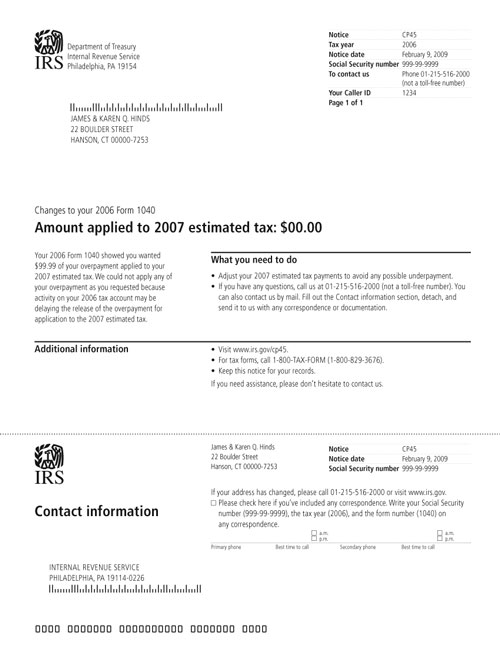No one likes to get a notice from the IRS.
No one.
It is true that pretty much any IRS communication you get won’t be a letter sending admiration for your excellent tax filings over the years, most letters fit into 1 or 2 categories:
- Asking for additional information – Many of these notices have no tax implications directly. They are usually received because the IRS is looking for a form, a box on a form to be checked, or is a request for other clarification so that the IRS can close the door on a particular filing you have done.
- A notice regarding a difference between their information and yours – This notice affects individuals and their annual 1040 filing most commonly. When you receive a form such as a W-2, a 1099, a 1098 or some other tax reporting document, the IRS receives a copy as well. It then looks to “match” the information on the form with what you report on your return. When there are differences, the IRS contacts you to explain the difference. Often this is when a client discovers a tax document they either never received or lost or forgot to provide to the preparer. Often, the simplest solution is to let the IRS calculate the change in tax and you pay the difference. The IRS will not necessarily contact you if its records indicate information that would increase your refund, unless it relates to either withholding or estimated tax payments you made. For example, assume you have a mortgage and an equity loan on your home. If you forget to include the interest from the equity loan on your return, chances are that you’ll never hear from the IRS about this, looking to possibly to refund you some tax. However, if you miss reporting interest income from a bank account you own, it is very likely that you’ll get a notice asking why it was omitted.
If you click here you will go to an IRS web-page that explains many of the typical notices you might get. A notice number is often found in the upper right-hand corner of the first page of the notice. Match the notice number on your notice to the numbers on this page and you’ll get a sense of what the issue is.
I have found over the years that most notices aren’t worthy of panic, but that is easy for me to say. The best move is to get the notice in the hand of a professional who can get to the bottom of it.
A sample notice below for your fun review (note that it is a Notice “CP45” which, according to the IRS website should refer to a change in amount applied to a tax return as an overpayment credited from a previous year…which in this case is exactly what the notice below is about):
